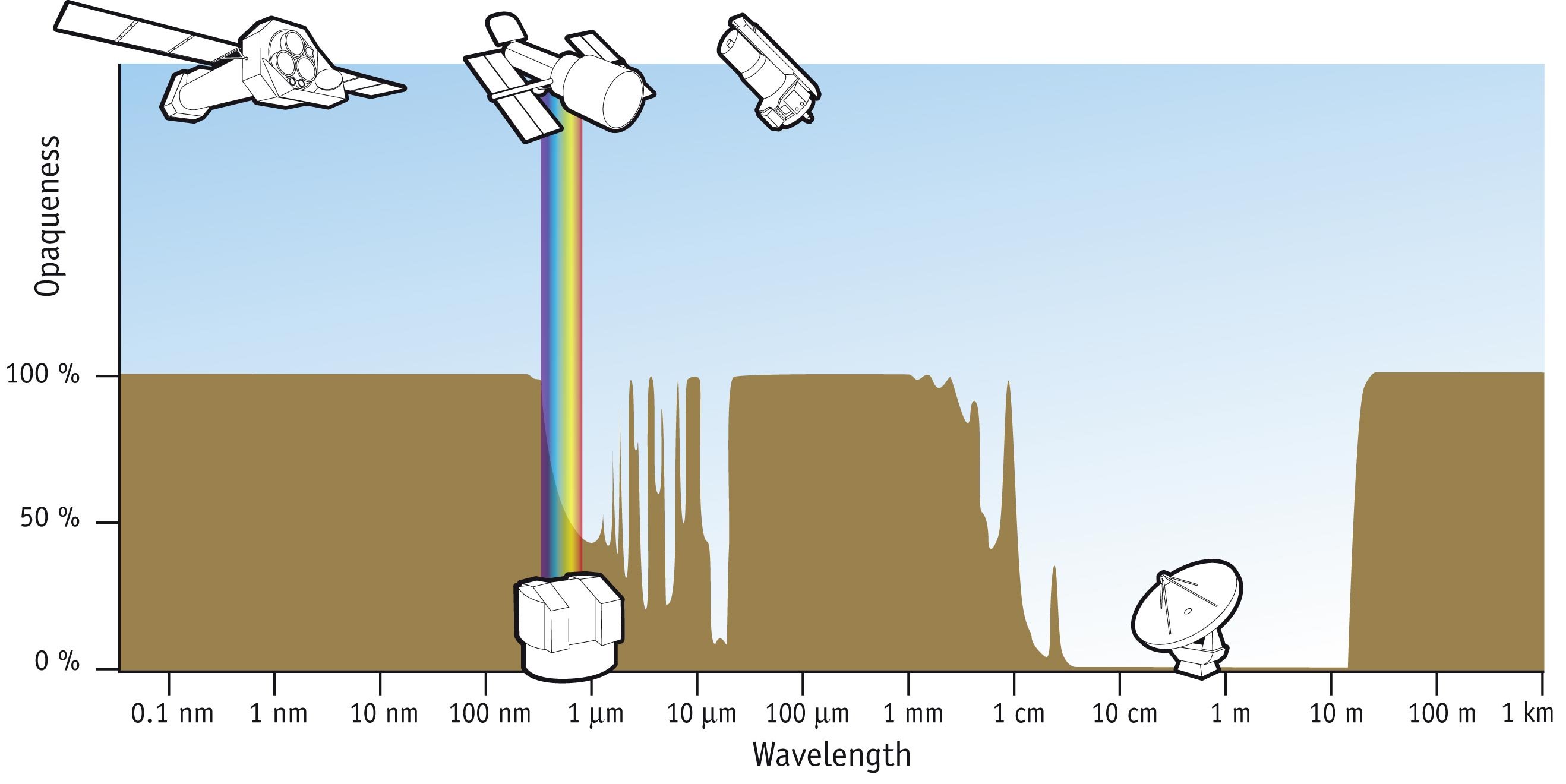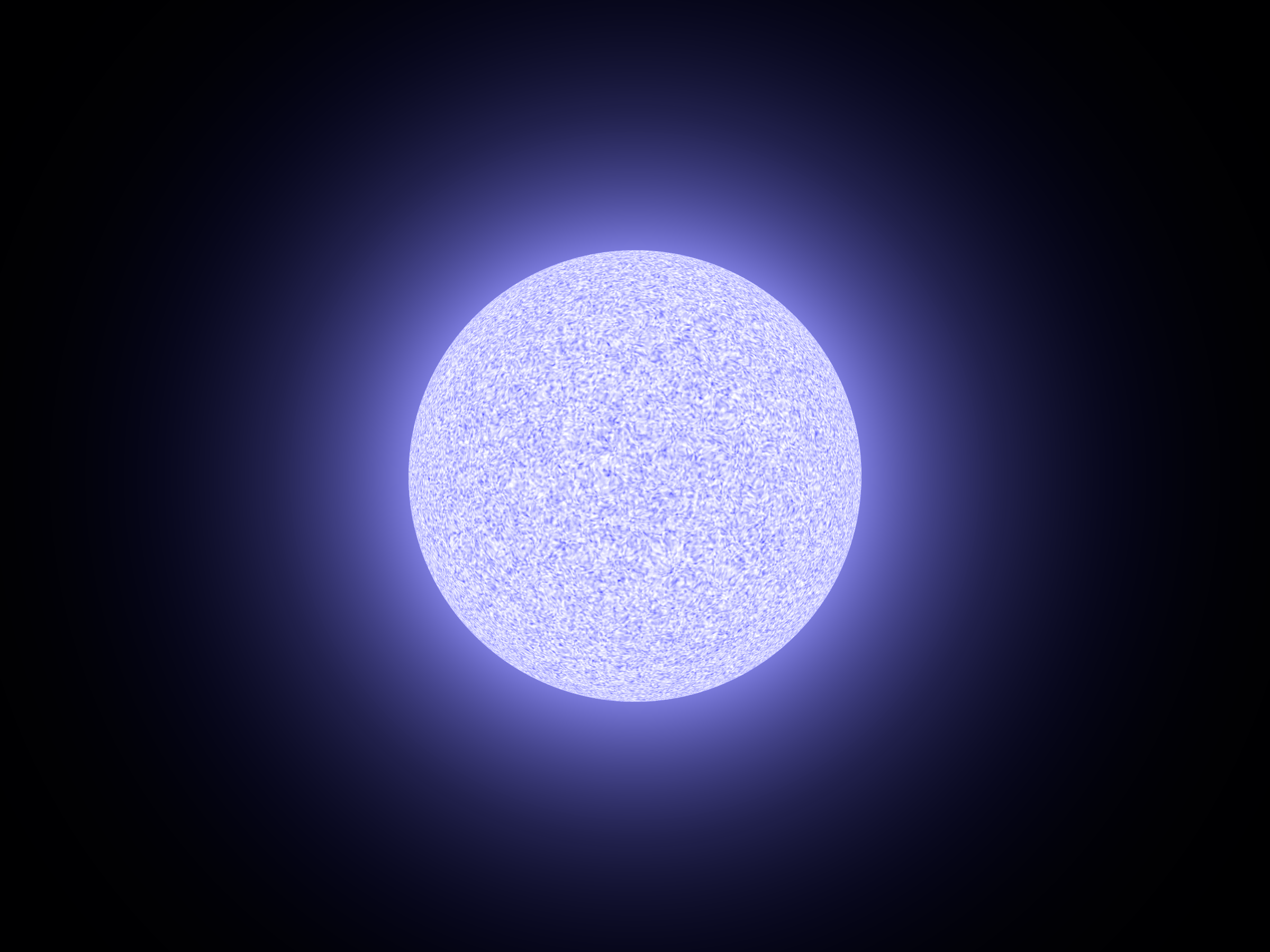|
η Ursae Majoris
Alkaid , also called Eta Ursae Majoris ( Latinised from η Ursae Majoris, abbreviated Eta UMa, η UMa), is a star in the constellation of Ursa Major. It is the easternmost star in the Big Dipper (or Plough) asterism. However, unlike most stars of the Big Dipper, it is not a member of the Ursa Major moving group. With an apparent visual magnitude of +1.86, it is the third-brightest star in the constellation and one of the brightest stars in the night sky. Physical properties Alkaid is a 10-million-year-old B-type main sequence star with a stellar classification of B3 V. Since 1943, the spectrum of this star has served as one of the stable anchor points by which other stars are classified. It has six times the mass; 3.4 times the radius, and is radiating around 594 times as much energy as the Sun. Its outer atmosphere has an effective temperature of about 15,540 K, giving it the blue-white hue of a B-type star. This star is an X-ray emitter with ... [...More Info...] [...Related Items...] OR: [Wikipedia] [Google] [Baidu] |
Ursa Major
Ursa Major, also known as the Great Bear, is a constellation in the Northern Sky, whose associated mythology likely dates back into prehistory. Its Latin name means "greater (or larger) bear", referring to and contrasting it with nearby Ursa Minor, the lesser bear. In antiquity, it was one of the original 48 constellations listed by Ptolemy in the 2nd century AD, drawing on earlier works by Greek, Egyptian, Babylonian, and Assyrian astronomers. Today it is the third largest of the 88 modern constellations. Ursa Major is primarily known from the asterism of its main seven stars, which has been called the "Big Dipper", "the Wagon", "Charles's Wain", or "the Plough", among other names. In particular, the Big Dipper's stellar configuration mimics the shape of the " Little Dipper". Two of its stars, named Dubhe and Merak ( α Ursae Majoris and β Ursae Majoris), can be used as the navigational pointer towards the place of the current northern pole star, Polaris in Ursa Mino ... [...More Info...] [...Related Items...] OR: [Wikipedia] [Google] [Baidu] |
Apparent Visual Magnitude
Apparent magnitude () is a measure of the brightness of a star, astronomical object or other celestial objects like artificial satellites. Its value depends on its intrinsic luminosity, its distance, and any extinction of the object's light caused by interstellar dust along the line of sight to the observer. Unless stated otherwise, the word ''magnitude'' in astronomy usually refers to a celestial object's apparent magnitude. The magnitude scale likely dates to before the ancient Roman astronomer Claudius Ptolemy, whose star catalog popularized the system by listing stars from 1st magnitude (brightest) to 6th magnitude (dimmest). The modern scale was mathematically defined to closely match this historical system by Norman Pogson in 1856. The scale is reverse logarithmic: the brighter an object is, the lower its magnitude number. A difference of 1.0 in magnitude corresponds to the brightness ratio of \sqrt /math>, or about 2.512. For example, a magnitude 2.0 star is 2. ... [...More Info...] [...Related Items...] OR: [Wikipedia] [Google] [Baidu] |
International Astronomical Union
The International Astronomical Union (IAU; , UAI) is an international non-governmental organization (INGO) with the objective of advancing astronomy in all aspects, including promoting astronomical research, outreach, education, and development through global cooperation. It was founded on 28 July 1919 in Brussels, Belgium and is based in Paris, France. The IAU is composed of individual members, who include both professional astronomers and junior scientists, and national members, such as professional associations, national societies, or academic institutions. Individual members are organised into divisions, committees, and working groups centered on particular subdisciplines, subjects, or initiatives. the Union had 85 national members and 12,734 individual members, spanning 90 countries and territories. Among the key activities of the IAU is serving as a forum for scientific conferences. It sponsors nine annual symposia and holds a triannual General Assembly that sets policy ... [...More Info...] [...Related Items...] OR: [Wikipedia] [Google] [Baidu] |
Absorption Line
Absorption spectroscopy is spectroscopy that involves techniques that measure the absorption (electromagnetic radiation), absorption of electromagnetic radiation, as a function of frequency or wavelength, due to its interaction with a sample. The sample absorbs energy, i.e., photons, from the radiating field. The intensity of the absorption varies as a function of frequency, and this variation is the #Absorption spectrum, absorption spectrum. Absorption spectroscopy is performed across the electromagnetic spectrum. Absorption spectroscopy is employed as an analytical chemistry tool to determine the presence of a particular substance in a sample and, in many cases, to quantify the amount of the substance present. Infrared spectroscopy, Infrared and ultraviolet–visible spectroscopy are particularly common in analytical applications. Absorption spectroscopy is also employed in studies of molecular and atomic physics, astronomical spectroscopy and remote sensing. There is a wide r ... [...More Info...] [...Related Items...] OR: [Wikipedia] [Google] [Baidu] |
X-ray Astronomy
X-ray astronomy is an observational branch of astronomy which deals with the study of X-ray observation and detection from astronomical objects. X-radiation is absorbed by the Earth's atmosphere, so instruments to detect X-rays must be taken to high altitude by Balloon-borne telescope, balloons, sounding rockets, and X-ray astronomy satellite, satellites. X-ray astronomy uses a type of space telescope that can see x-ray radiation which standard optical telescopes, such as the Mauna Kea Observatories, cannot. X-ray generation, X-ray emission is expected from astronomical objects that contain extremely hot gases at temperatures from about a million kelvin (K) to hundreds of millions of kelvin (MK). Moreover, the maintenance of the E-layer of ionized gas high in the Earth's thermosphere also suggested a strong extraterrestrial source of X-rays. Although theory predicted that the Sun and the stars would be prominent X-ray sources, there was no way to verify this because Earth's atmo ... [...More Info...] [...Related Items...] OR: [Wikipedia] [Google] [Baidu] |
B-type Star
In astronomy, stellar classification is the classification of stars based on their spectral characteristics. Electromagnetic radiation from the star is analyzed by splitting it with a prism or diffraction grating into a spectrum exhibiting the rainbow of colors interspersed with spectral lines. Each line indicates a particular chemical element or molecule, with the line strength indicating the abundance of that element. The strengths of the different spectral lines vary mainly due to the temperature of the photosphere, although in some cases there are true abundance differences. The ''spectral class'' of a star is a short code primarily summarizing the ionization state, giving an objective measure of the photosphere's temperature. Most stars are currently classified under the Morgan–Keenan (MK) system using the letters ''O'', ''B'', ''A'', ''F'', ''G'', ''K'', and ''M'', a sequence from the hottest (''O'' type) to the coolest (''M'' type). Each letter class is then subdivided ... [...More Info...] [...Related Items...] OR: [Wikipedia] [Google] [Baidu] |
Effective Temperature
The effective temperature of a body such as a star or planet is the temperature of a black body that would emit the same total amount of electromagnetic radiation. Effective temperature is often used as an estimate of a body's surface temperature when the body's emissivity curve (as a function of wavelength) is not known. When the star's or planet's net emissivity in the relevant wavelength band is less than unity (less than that of a black body), the actual temperature of the body will be higher than the effective temperature. The net emissivity may be low due to surface or atmospheric properties, such as the greenhouse effect. Star The effective temperature of a star is the temperature of a black body with the same luminosity per ''surface area'' () as the star and is defined according to the Stefan–Boltzmann law . Notice that the total ( bolometric) luminosity of a star is then , where is the stellar radius. The definition of the stellar radius is obviously not ... [...More Info...] [...Related Items...] OR: [Wikipedia] [Google] [Baidu] |
Stellar Atmosphere
The stellar atmosphere is the outer region of the volume of a star, lying above the stellar core, radiation zone and convection zone. Overview The stellar atmosphere is divided into several regions of distinct character: * The photosphere, which is the atmosphere's lowest and coolest layer, is normally its only visible part. Light escaping from the surface of the star stems from this region and passes through the higher layers. The Sun's photosphere has a temperature in the range. Starspots, cool regions of disrupted magnetic field, lie in the photosphere. * Above the photosphere lies the chromosphere. This part of the atmosphere first cools down and then starts to heat up to about 10 times the temperature of the photosphere. * Above the chromosphere lies the transition region, where the temperature increases rapidly on a distance of only around . * Additionally, many stars have a molecular layer (MOLsphere) above the photosphere and just beyond or even within the chromosphe ... [...More Info...] [...Related Items...] OR: [Wikipedia] [Google] [Baidu] |
Stellar Spectrum
Astronomical spectroscopy is the study of astronomy using the techniques of spectroscopy to measure the spectrum of electromagnetic radiation, including visible light, ultraviolet, X-ray, infrared and radio waves that radiate from stars and other celestial objects. A stellar spectrum can reveal many properties of stars, such as their chemical composition, temperature, density, mass, distance and luminosity. Spectroscopy can show the velocity of motion towards or away from the observer by measuring the Doppler shift. Spectroscopy is also used to study the physical properties of many other types of celestial objects such as planets, nebulae, galaxies, and active galactic nuclei. Background Astronomical spectroscopy is used to measure three major bands of radiation in the electromagnetic spectrum: visible light, radio waves, and X-rays. While all spectroscopy looks at specific bands of the spectrum, different methods are required to acquire the signal depending on the freque ... [...More Info...] [...Related Items...] OR: [Wikipedia] [Google] [Baidu] |
Stellar Classification
In astronomy, stellar classification is the classification of stars based on their stellar spectrum, spectral characteristics. Electromagnetic radiation from the star is analyzed by splitting it with a Prism (optics), prism or diffraction grating into a spectrum exhibiting the Continuum (spectrum), rainbow of colors interspersed with spectral lines. Each line indicates a particular chemical element or molecule, with the line strength indicating the abundance of that element. The strengths of the different spectral lines vary mainly due to the temperature of the photosphere, although in some cases there are true abundance differences. The ''spectral class'' of a star is a short code primarily summarizing the ionization state, giving an objective measure of the photosphere's temperature. Most stars are currently classified under the Morgan–Keenan (MK) system using the letters ''O'', ''B'', ''A'', ''F'', ''G'', ''K'', and ''M'', a sequence from the hottest (''O'' type) to the cool ... [...More Info...] [...Related Items...] OR: [Wikipedia] [Google] [Baidu] |
B-type Main Sequence Star
A B-type main-sequence star (B V) is a main-sequence (hydrogen-burning) star of spectral type B and luminosity class V. These stars have from 2 to 16 times the mass of the Sun and surface temperatures between 10,000 and 30,000 K. B-type stars are extremely luminous and blue. Their spectra have strong neutral helium absorption lines, which are most prominent at the B2 subclass, and moderately strong hydrogen lines. Examples include Regulus, Algol A and Acrux. History This class of stars was introduced with the Harvard sequence of stellar spectra and published in the ''Revised Harvard photometry'' catalogue. The definition of type B-type stars was the presence of non-ionized helium lines with the absence of singly ionized helium in the blue-violet portion of the spectrum. All of the spectral classes, including the B type, were subdivided with a numerical suffix that indicated the degree to which they approached the next classification. Thus B2 is 1/5 of the way from type B (or ... [...More Info...] [...Related Items...] OR: [Wikipedia] [Google] [Baidu] |
Alkaid And Sun From 0,23 UA
Alkaid , also called Eta Ursae Majoris ( Latinised from η Ursae Majoris, abbreviated Eta UMa, η UMa), is a star in the constellation of Ursa Major. It is the easternmost star in the Big Dipper (or Plough) asterism. However, unlike most stars of the Big Dipper, it is not a member of the Ursa Major moving group. With an apparent visual magnitude of +1.86, it is the third-brightest star in the constellation and one of the brightest stars in the night sky. Physical properties Alkaid is a 10-million-year-old B-type main sequence star with a stellar classification of B3 V. Since 1943, the spectrum of this star has served as one of the stable anchor points by which other stars are classified. It has six times the mass; 3.4 times the radius, and is radiating around 594 times as much energy as the Sun. Its outer atmosphere has an effective temperature of about 15,540 K, giving it the blue-white hue of a B-type star. This star is an X-ray emitter with a ... [...More Info...] [...Related Items...] OR: [Wikipedia] [Google] [Baidu] |








